The American Institute of Architects (AIA) Committee on the Environment (COTE) is awarding 10 design projects with its highest honor—the AIA COTE Top Ten Awards—for their significant achievements in holistic sustainability and advancing climate action and equity.
The COTE Top Ten Awards celebrate design projects that have expertly integrated design excellence with innovative performance in ten key areas. The projects illustrate the solutions architects provide for the health and welfare of our communities and planet.
To be eligible, project submissions are required to demonstrate alignment with COTE’s rigorous criteria, which include social, economic, and ecological values. The four-member jury evaluates each project submission based on the effectiveness of their holistic design solution and metrics associated with the ten principles of AIA’s Framework for Design Excellence.
On the the 2023 COTE Top Ten Awards jury:
- Katie Ackerly, AIA, Chair, David Baker, Oakland, Calif.
- Julian Owens, Assoc. AIA, Jacobs, Arlington, Va.
- Seonhee Kim, AIA, Design Collective, Baltimore
- Avinash Rajagopal, Metropolis, New York
The 2023 COTE Top Ten Awards winners are (project descriptions and images courtesy AIA):
Casa Adelante 2060 Folsom, San Francisco | Mithun with Y.A. Studio
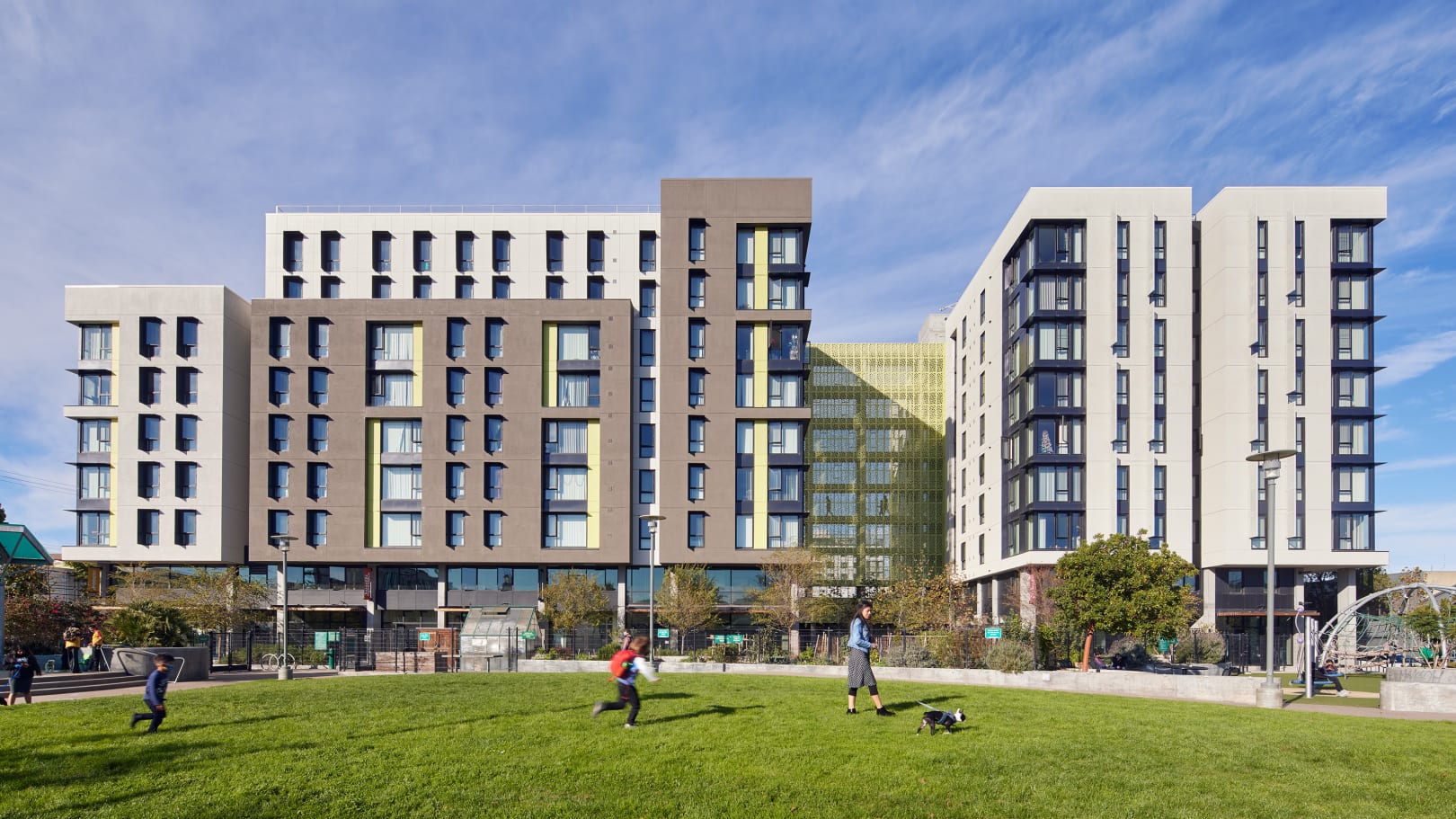
In San Francisco’s Mission District, where 47% of the city’s households are housing-cost burdened, Casa Adelante provides 127 households with permanently affordable housing at no more than one-third of their income. The project takes advantage of its walkable and transit-rich site to bolster social equity and strive for a low-carbon future. Through its massing, the project increases the south-facing perimeter to create the most housing and provides compelling park views for the majority of the building’s units. The team also reimagined a narrow fire easement between the site and the adjacent park to create a pedestrian paseo that delivers much-needed public outdoor space and a permeable area that boosts stormwater management and the region’s biohabitat. Read more on this project. Photo: Bruce Damonte
Confluence Park, San Antonio | Lake|Flato Architects + Matsys
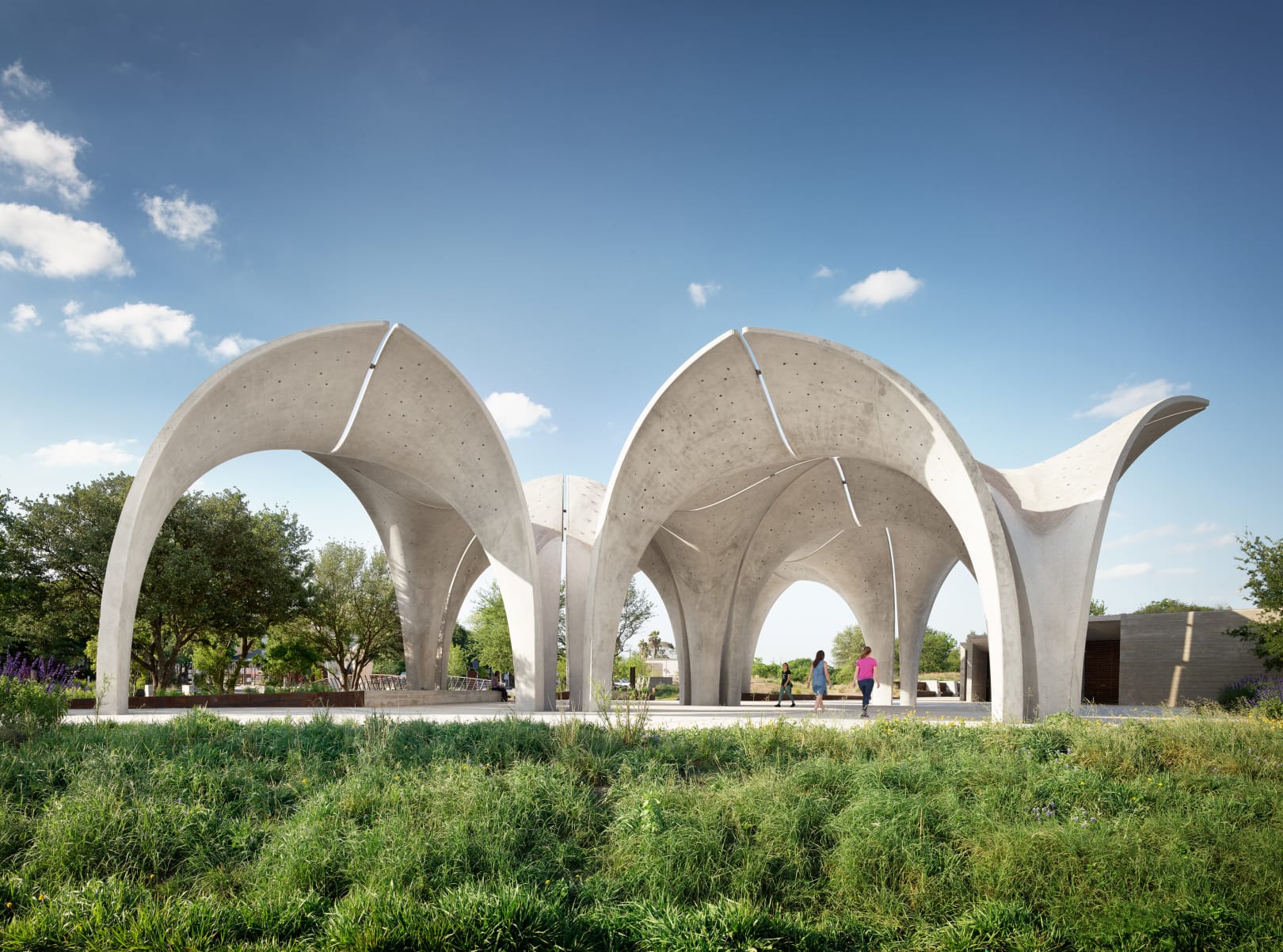
Along the bank of the San Antonio River, Confluence Park is a living laboratory designed to broaden visitors’ understanding of south Texas ecotypes and the impact of urban development on local watersheds. A destination for learning and recreation, the park is part of the country’s largest environmental restoration project and an accessible gateway to outdoor activity. The design reflects the idea of confluence—the park is situated at the junction of the San Antonio River and San Pedro Creek. Grand gestures such as the park’s shaped lands represent the convergence of ecotypes, while the central pavilion’s concrete petal structures draw inspiration from plants that funnel rainwater to their roots. Read more on this project. Photo: Casey Dunn
DPR Sacramento Zero Net Energy Office, Sacramento | SmithGroup
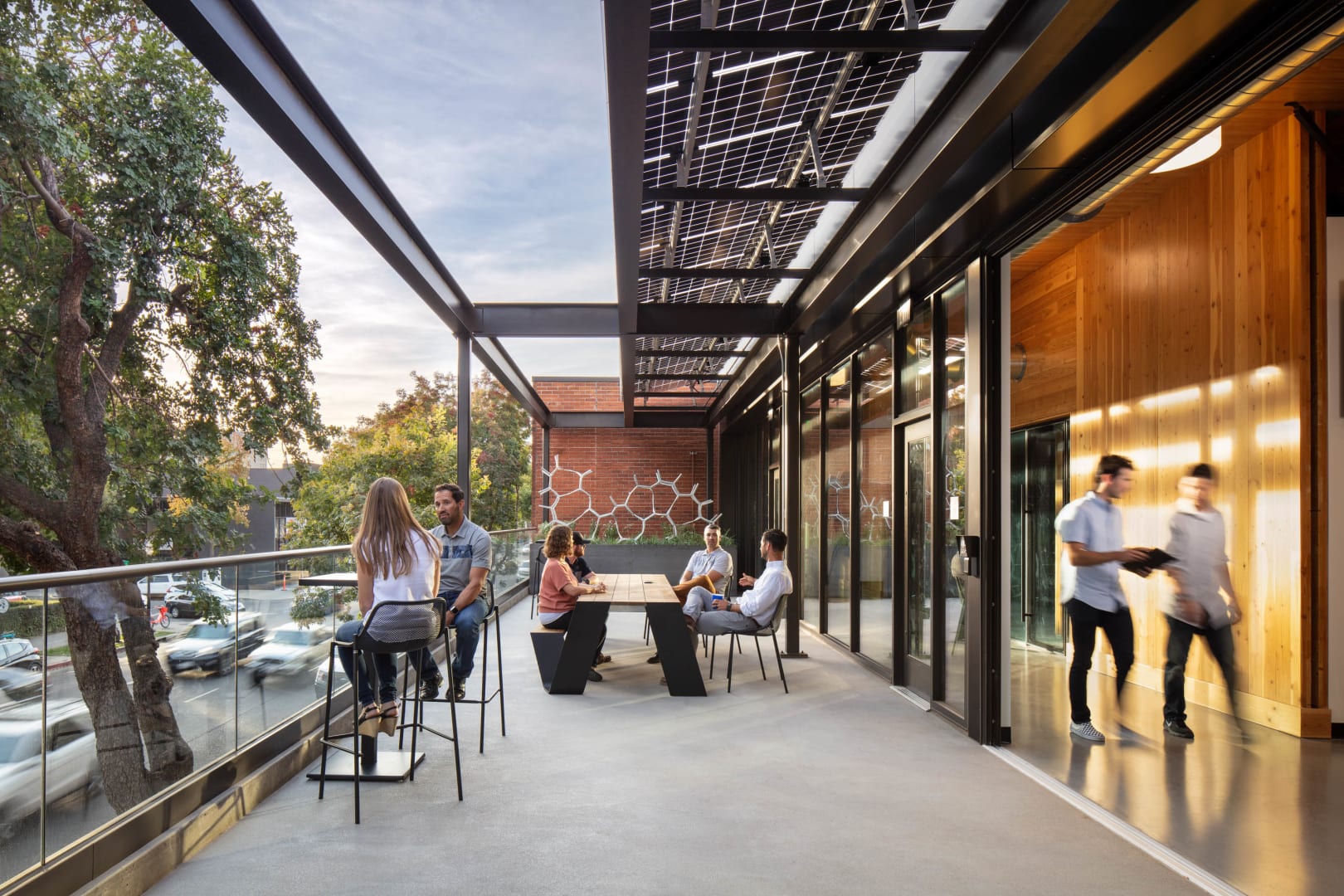
For its new headquarters in Sacramento, DPR Construction envisioned a sustainable work environment that would foster a greater sense of collaboration among its employees and would have strong ties to both nature and the surrounding community. The net zero energy project includes the renovation of an almost 27,000-square-foot building originally constructed in 1940 and a 5,600-square-foot addition built entirely with cross-laminated timber. As a compelling new addition to “The City of Trees,” the office is filled with biophilic design elements, a highlight of which is a seed wall that upends the concept of a living wall. It contains dormant seeds instead of live plants, including a selection of native grassland species that are vital to more than 90% of California’s wildlife. Read more on this project. Photo: © Chad Davies
Harvard University Science and Engineering Complex, Boston | Behnisch Architekten
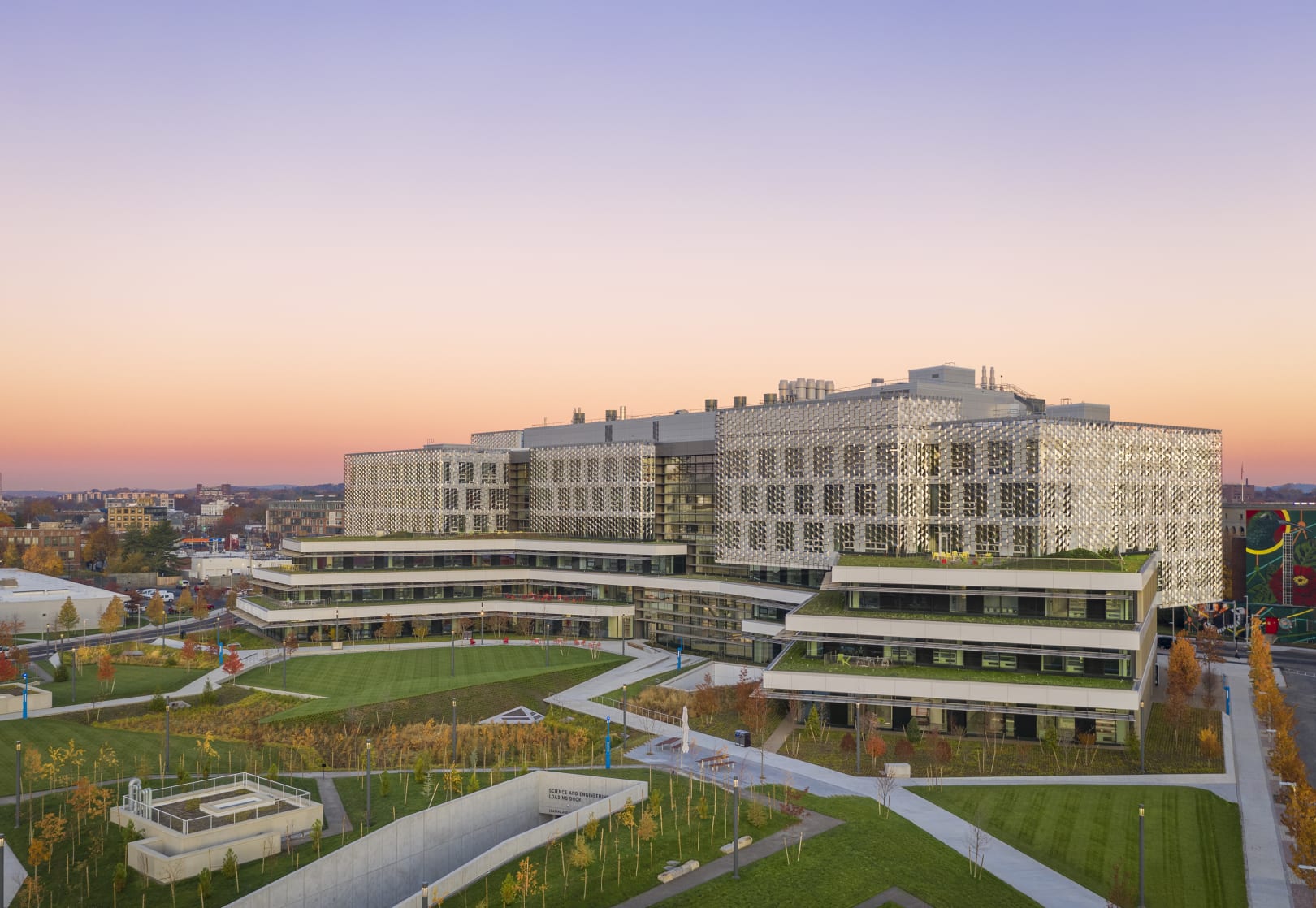
Among the healthiest and most energy-efficient laboratory buildings in the world, Harvard’s Science and Engineering Complex (SEC) helps shift the typology toward environmental stewardship. It sets a new standard for Harvard and highlights its mission to shape a more sustainable university community and planet. Designed to reflect the leading research taking place inside, the complex also connects users to one another in the spirit of collaboration. It was built just over the bridge from Harvard’s Cambridge campus in Lower Allston, one of 23 neighborhoods that make up the City of Boston. The goal was to create a new sustainably built home for the Harvard John A. Paulson School of Engineering and Applied Sciences (SEAS) where a robust culture of collaboration and interdisciplinary work could be fostered. The SEC site is also a connector that links the neighborhood and Boston’s park system. Read more on this project. Photo: Brad Feinknopf
John W. Olver Transit Center, Greenfield, Mass. | Charles Rose Architects
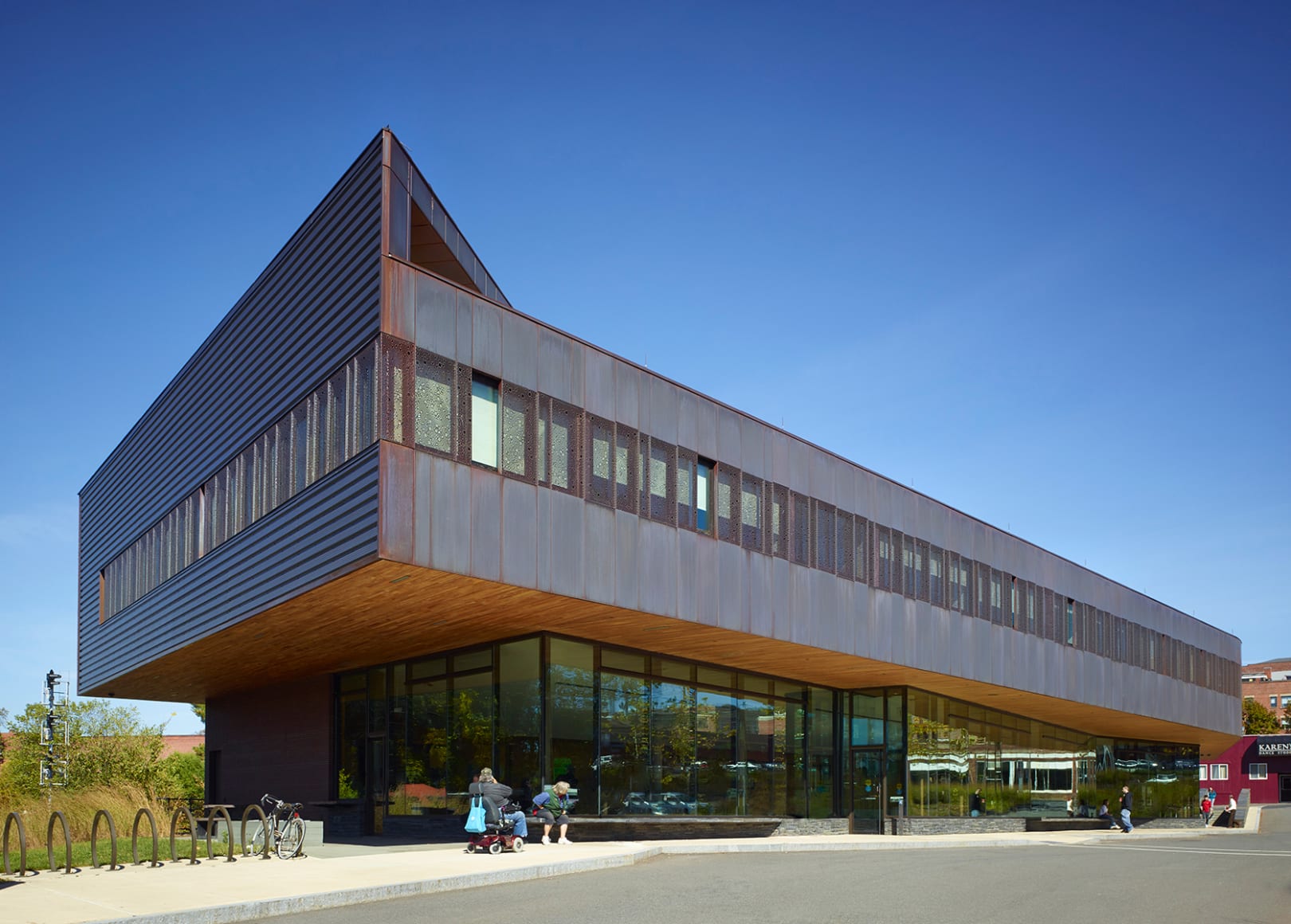
The first net zero energy transit center constructed in the United States, the John W. Olver Transit Center is a vital intermodal hub that has introduced high-performance design to Massachusetts. The project, a depot for bus lines, Amtrak, and an office for the county’s government, is testament to Franklin County’s commitment to sustainability and ethical design. Shaped by a continuous process of community engagement, the center’s design pays homage to the city of Greenfield’s past, relying on dark brick, copper, and locally sourced stone that allow it to slip seamlessly into the city’s stately downtown district. The center forges a new paradigm for historically energy-dependent structures of its kind and, in doing so, has generated positive economic impact while spurring sustainable urban revitalization. Read more on this project. Photo: John Edward Linden Photography
RIDC Mill 19: Buildings A & B, Pittsburgh | MSR Design
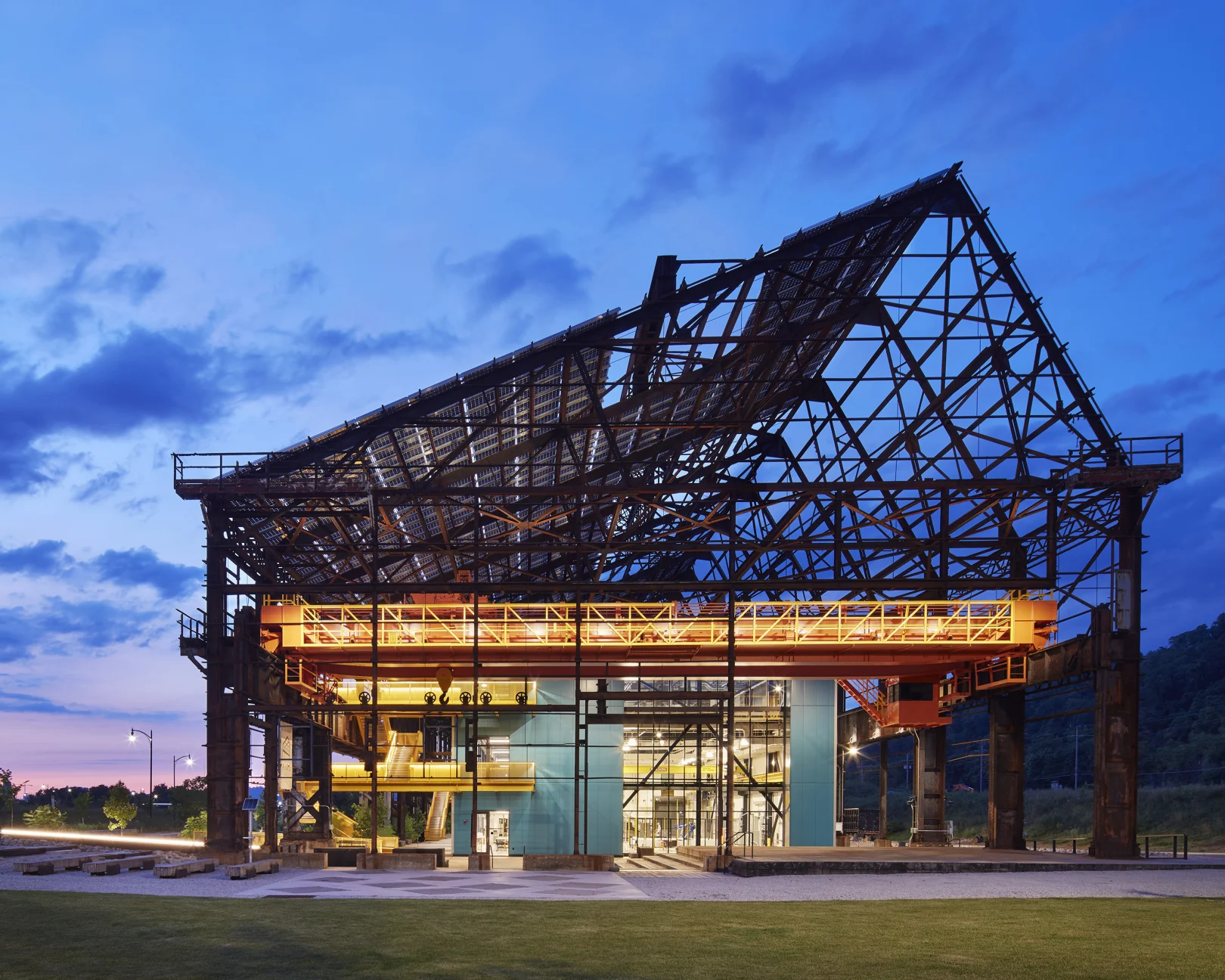
A vital new addition to Pittsburgh’s post-industrial landscape, Mill 19 is a bold transformation of a former steel mill that now welcomes the sustainable future of advanced manufacturing. Within the decommissioned mill’s steel superstructure, multi-tenant, tech-focused buildings create tension between old and new, while the country’s largest single-slope bifacial glass photovoltaic array crowns the project. In addition to accelerating the city’s future, Mill 19 is a potent catalyst for the development of Hazelwood Green, Pittsburgh’s largest riverfront redevelopment project, which is being built on its final large-scale brownfield site. Read more on this project. Photo: Corey Gaffer
Science and Environmental Center, Hillsborough, Calif. | Leddy Maytum Stacy Architects
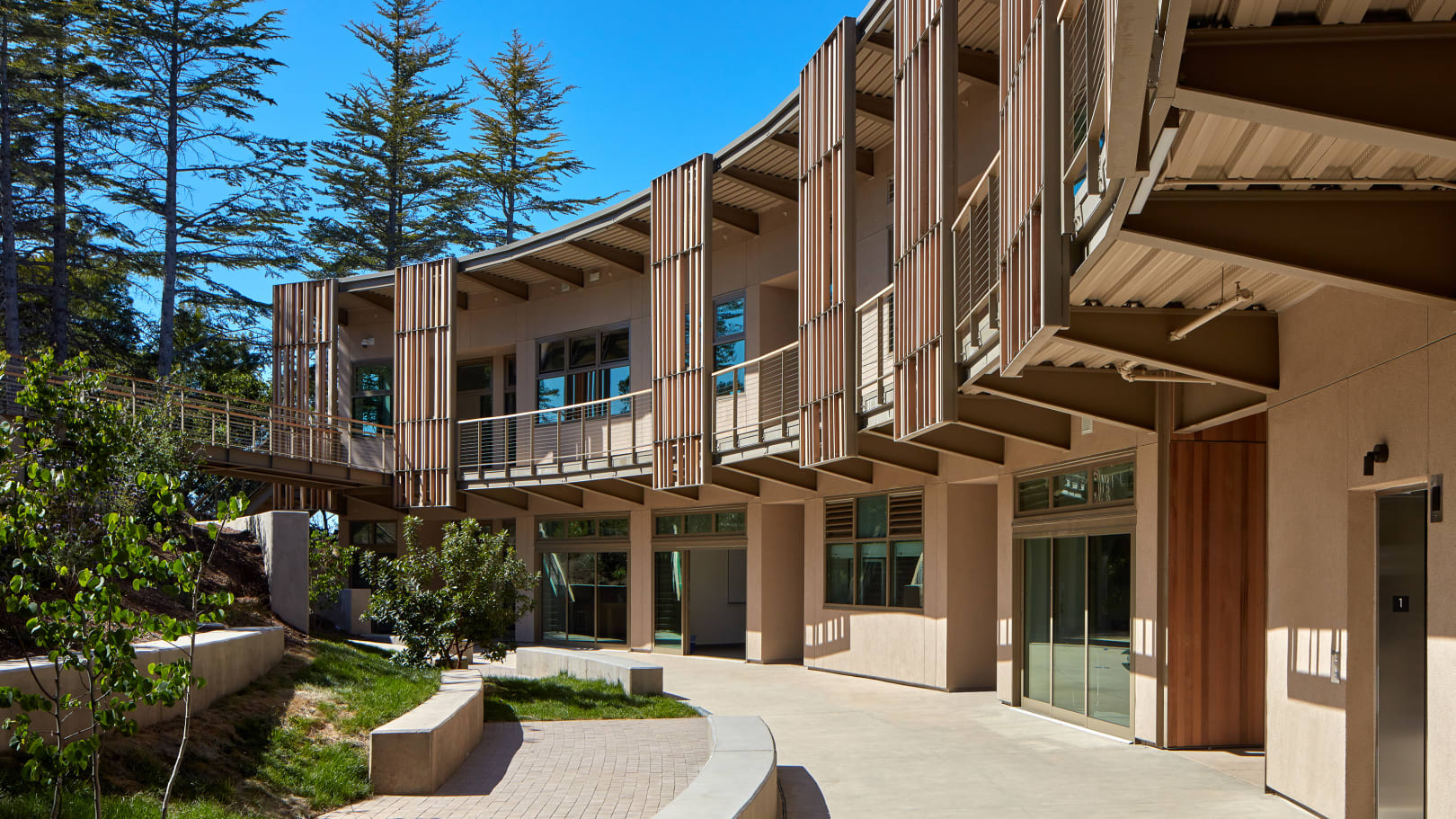
The new net zero carbon Science and Environmental Center is the embodiment of The Nueva School’s mission to spark a passion for lifelong learning and foster social acuity and environmental citizenship in the imaginative young minds of its students. The center supports the independent school’s evolving mission that is rooted in sustainability and environmental stewardship as a central tenet of student education. It houses the school’s environmental citizenship program that features eight science labs and associated support spaces that welcome all grades to explore the important connections between humans and the natural environment. Indoor and outdoor learning spaces are linked to shape an “ecology of learning” wherein students practice sustainability, conduct environmental and social studies, and collaboratively explore potential solutions to a broad range of environmental challenges. Read more on this project. Photo: ©richardbarnes
UC San Diego North Torrey Pines Living & Learning Neighborhood, San Diego | HKS, Inc & Safdie Rabines Architects
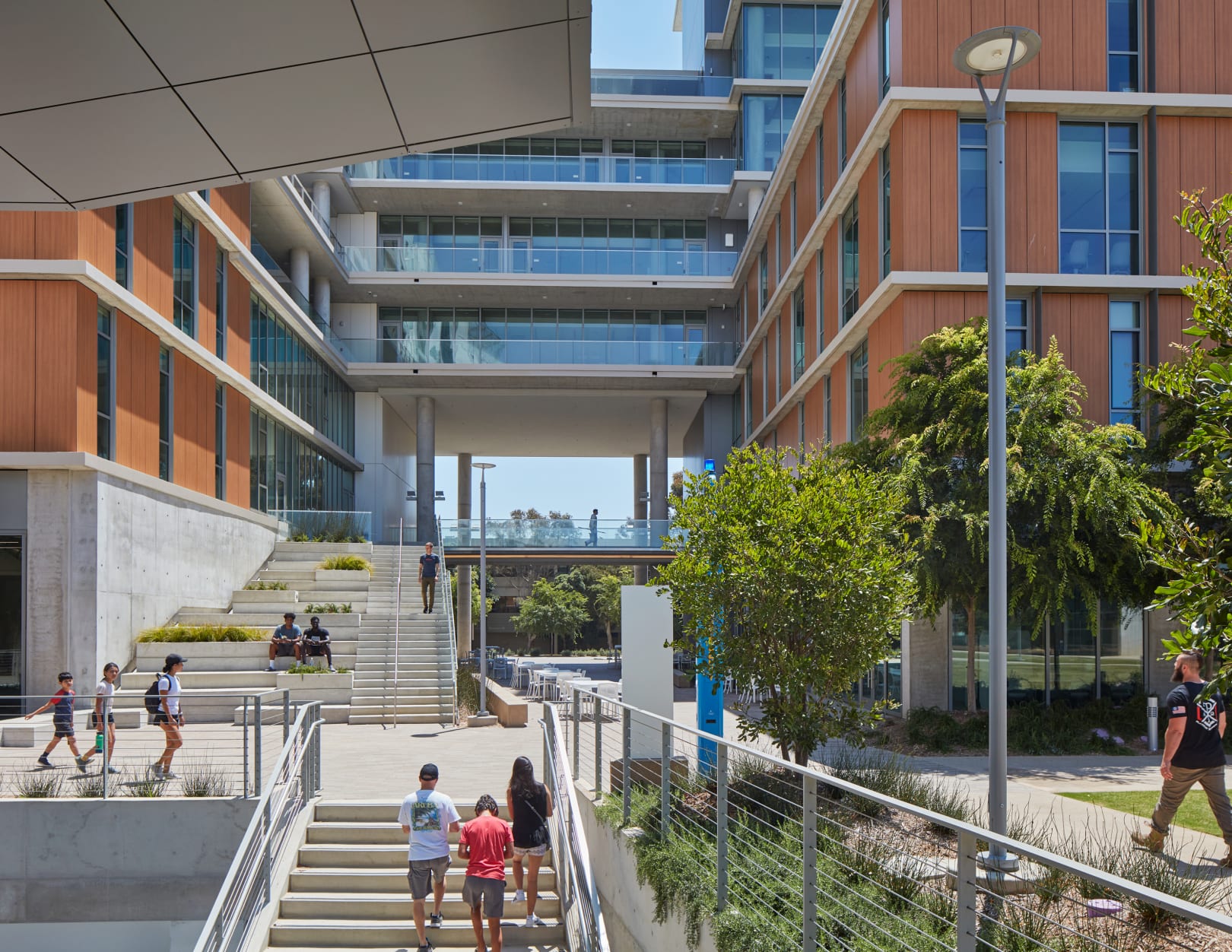
The largest project in the University of California, San Diego’s history, the North Torrey Pines Living and Learning Neighborhood reflects the school’s reputation as a longtime leaders in climate change research and education and its quest to be carbon neutral by 2025. The neighborhood is a mix of three residence halls, two academic buildings, eight general assignment classrooms, offices, parking, and public amenities that work in concert to foster iterative improvement and innovation among the next generation of environmental stewards. Conceived through evidence-based design, it is the most substantial project in the higher education sector to receive LEED Platinum certification. Read more on this project. Photo: Tom Harris
Watershed, Seattle | Weber Thompson
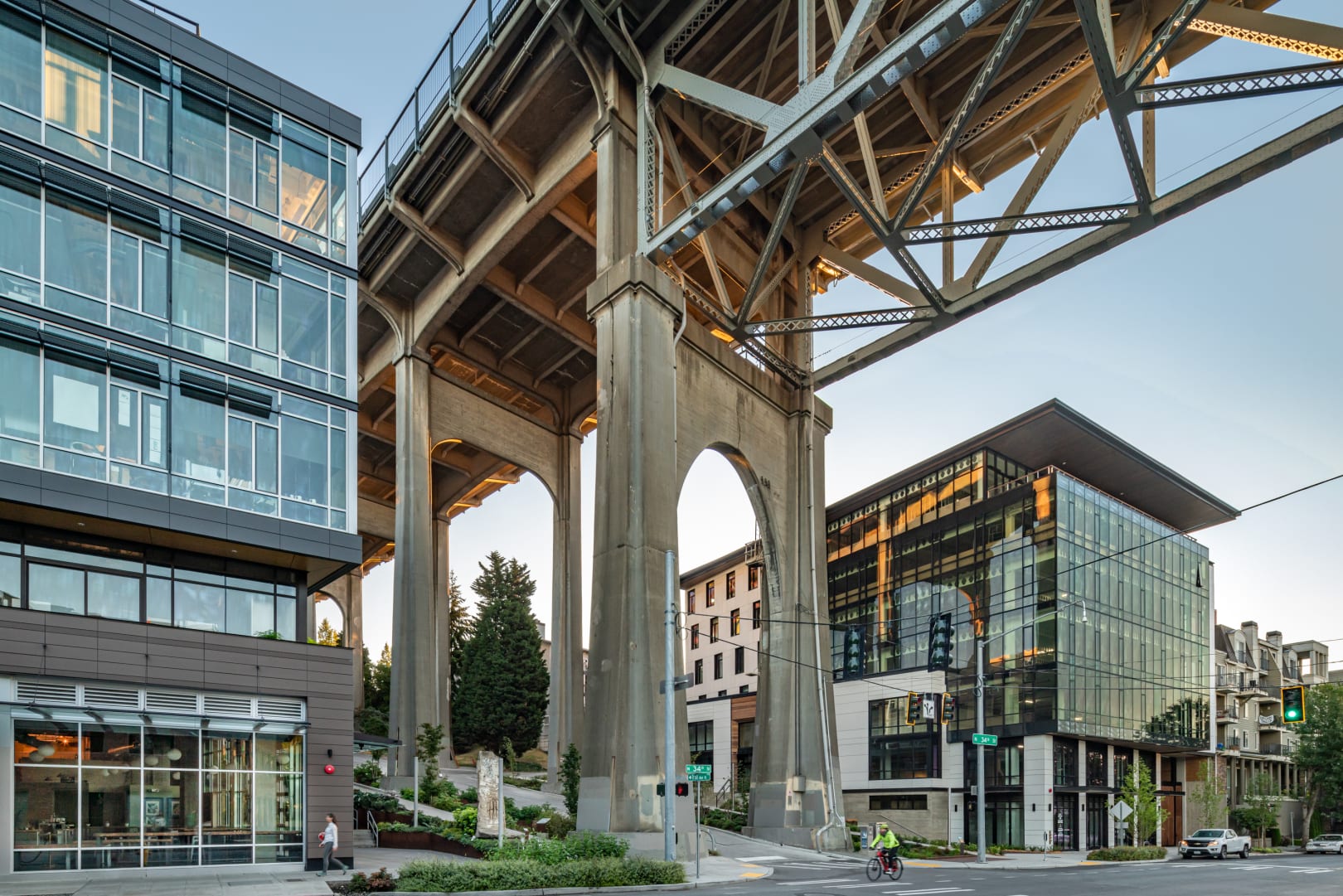
As one of the few buildings enrolled in Seattle’s Living Building Pilot Program, this building looks to move beyond incremental changes to achieve a better environment. Watershed is a regenerative seven-story office building making a profound positive effect on Seattle’s waterways, which suffer from a significant stormwater runoff problem that is affecting wildlife. Through strategies such as a series of bioswales that step down the site’s hillside, the building cleans more than 400,000 gallons of highly polluted water before it drains into nearby Lake Union. Inside its lobby, which is open to the public, visitors and tenants are kept informed of Watershed’s high performance through a digital dashboard, regular reports, and tours. Read more on this project. Photo: Built Work Photography
Westwood Hills Nature Center, St. Louis Park, Minn. | HGA Architects and Engineers
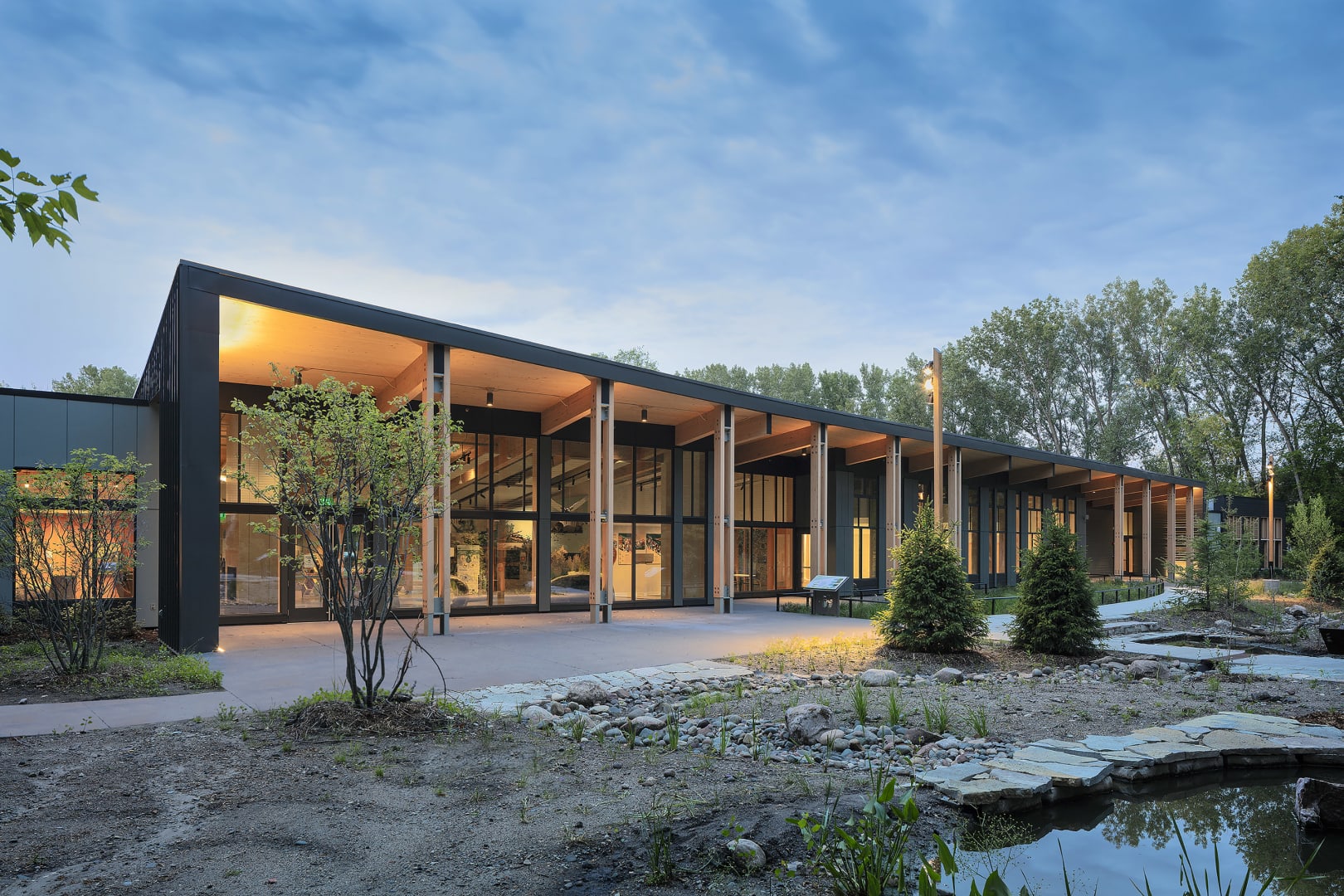
A new interpretive and accessible gateway to nature for the city of St. Louis Park, Minnesota, the Westwood Hills Nature Center immerses visitors in the surrounding forest full of birdsong and gentle breezes. Its design draws inspiration from the site with an exterior skin that evokes tree bark and a combination of fiber cement panels and window assemblies that subdivide and branch, much like the surrounding trees. The result of a vital partnership that included the design team, civic leaders, exhibit design specialists, and educators, the center is a true teaching tool and a vibrant amenity shaped by the city’s forward-thinking climate action plan that strives to achieve net zero by 2040. Read more on this project. Photo: Peter J. Sieger
Read more about the 2023 COTE Top Ten Awards winners
See past COTE Top Ten Awards winners:
Related Stories
| Feb 4, 2011
U.S. Green Building Council applauds President Obama’s Green Building Initiative
The U.S. Green Building Council applauded a key element of President Obama’s plan to “win the future” by making America’s commercial buildings more energy- and resource-efficient over the next decade. The President’s plan, entitled Better Buildings Initiative, catalyzes private-sector investment through a series of incentives to upgrade offices, stores, schools and universities, hospitals and other commercial and municipal buildings.
| Feb 4, 2011
President Obama: 20% improvement in energy efficiency will save $40 billion
President Obama’s Better Buildings Initiative, announced February 3, 2011, aims to achieve a 20% improvement in energy efficiency in commercial buildings by 2020, improvements that will save American businesses $40 billion a year.
| Jan 19, 2011
U.S. Green Building Council Welcomes New Board Directors
The U.S. Green Building Council (USGBC) has announced newly elected officers and new directors to its 2011 Board of Directors, including Elizabeth J. Heider from Skanska; Kirsten Ritchi from Gensler; and Dennis Maloskey, from the Pennsylvania Governor's Green Government Council.
| Jan 7, 2011
Mixed-Use on Steroids
Mixed-use development has been one of the few bright spots in real estate in the last few years. Successful mixed-use projects are almost always located in dense urban or suburban areas, usually close to public transportation. It’s a sign of the times that the residential component tends to be rental rather than for-sale.
| Dec 7, 2010
Blue is the future of green design
Blue design creates places that are not just neutral, but actually add back to the world and is the future of sustainable design and architecture, according to an interview with Paul Eagle, managing director of Perkins+Will, New York; and Janice Barnes, principal at the firm and global discipline leader for planning and strategies.
| Nov 29, 2010
Renovating for Sustainability
Motivated by the prospect of increased property values, reduced utility bills, and an interest in jumping on the sustainability bandwagon, a noted upturn in green building upgrades is helping designers and real estate developers stay busy while waiting for the economy to recover. In fact, many of the larger property management outfits have set up teams to undertake projects seeking LEED for Existing Buildings: Operations & Maintenance (LEED-EBOM, also referred to as LEED-EB), a certification by the U.S. Green Building Council.
| Nov 16, 2010
Brazil Olympics spurring green construction
Brazil's green building industry will expand in the coming years, spurred by construction of low-impact venues being built for the 2016 Olympics. The International Olympic Committee requires arenas built for the 2016 games in Rio de Janeiro meet international standards for low-carbon emissions and energy efficiency. This has boosted local interest in developing real estate with lower environmental impact than existing buildings. The timing couldn’t be better: the Brazilian government is just beginning its long-term infrastructure expansion program.
| Nov 16, 2010
Green building market grows 50% in two years; Green Outlook 2011 report
The U.S. green building market is up 50% from 2008 to 2010—from $42 billion to $55 billion-$71 billion, according to McGraw-Hill Construction's Green Outlook 2011: Green Trends Driving Growth report. Today, a third of all new nonresidential construction is green; in five years, nonresidential green building activity is expected to triple, representing $120 billion to $145 billion in new construction.
| Nov 11, 2010
USGBC certifies more than 1 billion square feet of commercial space
This month, the total footprint of commercial projects certified under the U.S. Green Building Council’s LEED Green Building Rating System surpassed one billion square feet. Another six billion square feet of projects are registered and currently working toward LEED certification around the world. Since 2000, more than 36,000 commercial projects and 38,000 single-family homes have participated in LEED.










